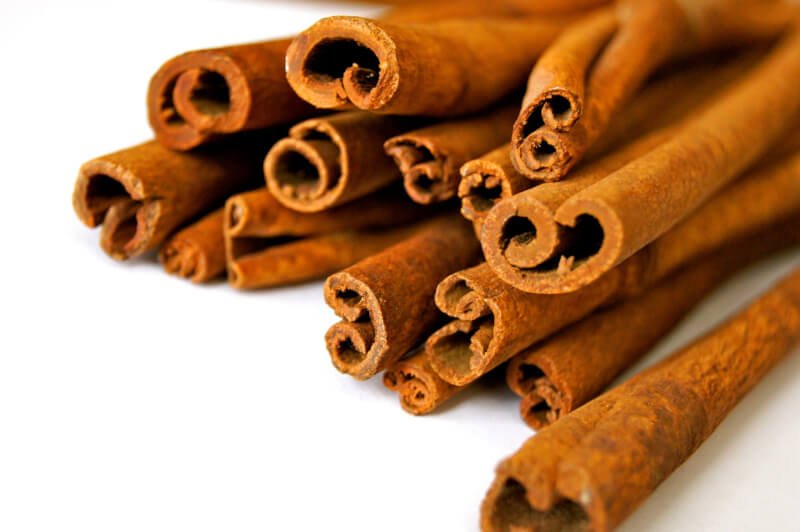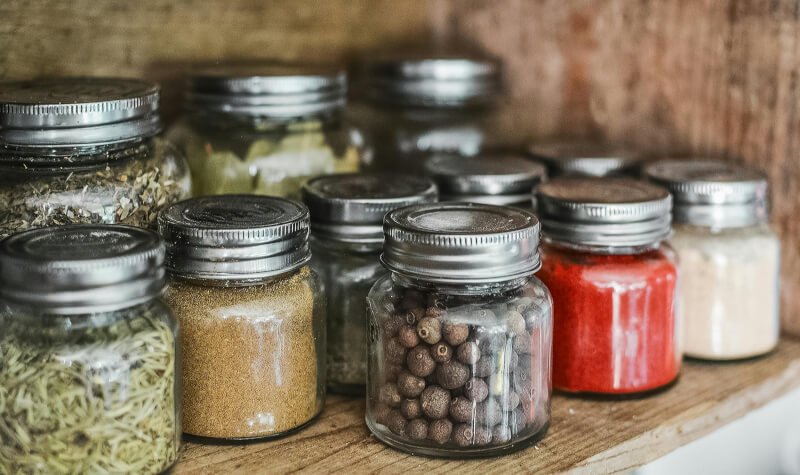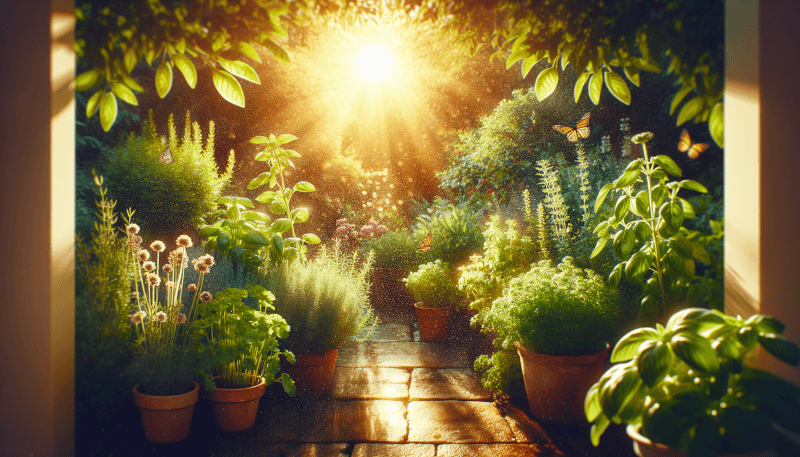Are you tired of bland and boring meals? Look no further! In this article, we will introduce you to the top 10 herbs that will bring a burst of flavor to your garden recipes. Whether you are a seasoned chef or a budding cook, these herbs are sure to elevate your culinary creations to the next level. From the zesty freshness of basil to the earthy richness of rosemary, each herb has its unique charm and can transform the ordinary into the extraordinary. So get ready to tantalize your taste buds and impress your guests with the incredible flavors that these herbs have to offer!
1. Basil
Varieties of Basil
Basil is a popular herb that comes in various varieties, each with its own unique flavor profile and appearance. Some common types of basil include sweet basil, Thai basil, lemon basil, and purple basil. Sweet basil is the most common variety, known for its slightly sweet and peppery flavor. Thai basil, on the other hand, has a licorice-like taste and is often used in Southeast Asian cuisine. Lemon basil adds a citrusy twist to dishes, while purple basil is known for its vibrant color and milder flavor.
Growing and Caring for Basil
Basil is an herb that thrives in warm climates and requires plenty of sunlight. It can be grown both indoors and outdoors, making it accessible to gardeners of all spaces. Whether you choose to grow basil in a pot or in the ground, make sure to provide it with well-draining soil and water it regularly to keep the soil moist. It is also important to pinch off the flowers that appear on the basil plant to encourage more leaf growth.
Tips for Using Basil in Garden Recipes
Basil is a versatile herb that can be used in a wide range of garden recipes. It pairs well with tomatoes, making it a key ingredient in homemade pasta sauces and Caprese salads. Basil also adds a fresh and fragrant touch to pizzas, sandwiches, and even cocktails. You can also make a delicious pesto sauce using basil, garlic, pine nuts, Parmesan cheese, and olive oil. The possibilities are endless when it comes to incorporating basil into your garden-inspired dishes.
2. Mint
Types of Mint
Mint is a refreshing herb that comes in various types, each with its own unique flavor and aroma. Some popular varieties of mint include spearmint, peppermint, chocolate mint, and pineapple mint. Spearmint is the most widely used type of mint, known for its refreshing flavor and scent. Peppermint has a stronger and cooler taste, making it a popular choice for tea. Chocolate mint adds a hint of chocolate flavor to dishes, while pineapple mint has a fruity and tropical taste.
How to Grow and Maintain Mint Plants
Mint is a hardy herb that grows best in moist soil and partial shade. It is a spreading plant, so it is recommended to grow it in a container or a designated area in the garden to prevent it from taking over. Mint can also be propagated by taking cuttings from an existing plant. To care for mint plants, make sure to water them regularly and trim any yellow or wilted leaves. It is also a good idea to pinch off the flowers to encourage leaf growth and prevent the plant from becoming too woody.
Creative Ways to Incorporate Mint into Recipes
Mint adds a refreshing and cooling element to many recipes, making it a perfect herb for summer dishes and beverages. A classic way to use mint is to make a refreshing mojito by muddling mint leaves with lime juice, sugar, and rum. Mint can also be used to make a flavorful mint chutney or sauce that pairs well with grilled meats and vegetables. In desserts, mint can be used to infuse flavor into ice cream, chocolate truffles, and fruit salads. Get creative and experiment with incorporating mint into your garden recipes for a burst of freshness.

3. Rosemary
Benefits and Uses of Rosemary
Rosemary is an aromatic herb that has a distinct pine-like aroma and a flavorful taste. It is not only a versatile culinary herb but also offers several health benefits. Rosemary is known to improve digestion, boost memory and concentration, and provide anti-inflammatory properties. In the kitchen, rosemary is commonly used to flavor roasted meats, potatoes, and vegetables. It can also be used to infuse oils and vinegar, adding a unique flavor to salad dressings and marinades.
Growing Rosemary in Your Garden
Rosemary is a hardy herb that thrives in well-draining soil and requires plenty of sunlight. It is best to grow rosemary in a sunny spot in your garden or in a container if you have limited space. The soil should be moderately moist, but not overly wet to prevent root rot. Rosemary is a slow-growing herb, so it is important to provide it with adequate space to grow. Prune the plant regularly to promote bushier growth and to prevent the stems from becoming woody.
Delicious Recipes to Try Using Rosemary
Rosemary adds a fragrant and savory touch to a wide range of recipes. It pairs well with roasted meats such as lamb, chicken, and beef, adding a flavorful and aromatic element to the dish. Rosemary can also be used to flavor roasted potatoes and vegetables, enhancing their taste with its unique aroma. You can also try infusing rosemary into olive oil or vinegar to create homemade dressings and marinades. Get creative in the kitchen and experiment with rosemary to elevate the flavors of your garden-inspired recipes.
4. Thyme
Different Varieties of Thyme
Thyme is a versatile herb that comes in several varieties, each with its own distinctive flavor profile. Some common types of thyme include common thyme, lemon thyme, and creeping thyme. Common thyme is the most widely used variety, known for its earthy and slightly minty taste. Lemon thyme, as the name suggests, has a subtle lemon flavor that adds a citrusy twist to dishes. Creeping thyme is a low-growing variety that is often used as ground cover or in rock gardens.
Cultivating Thyme in Your Garden
Thyme is a hardy herb that requires well-draining soil and full sun exposure to thrive. It is a great herb for beginners as it is low maintenance and drought-tolerant. Thyme can be grown from seeds or transplants, and it is best to plant it in the spring after the last frost. To care for thyme plants, water them regularly but avoid over-watering, as thyme prefers slightly dry soil. Prune the plants regularly to promote bushier growth and to maintain their shape.
Enhancing Recipes through Thyme
Thyme is a versatile herb that adds depth and aroma to a variety of recipes. It pairs well with roasted meats, particularly chicken, lamb, and pork, infusing them with its earthy and minty flavor. Thyme can also be used to season roasted vegetables, soups, and stews, adding a savory note to the dish. It is also a key ingredient in classic herb blends such as herbes de Provence and bouquet garni. Experiment with thyme in your garden recipes and discover the wonderful flavors it brings to the table.

5. Parsley
Curly Leaf vs. Flat Leaf Parsley
Parsley is an herb that comes in two main varieties: curly leaf parsley and flat leaf parsley, also known as Italian parsley. Curly leaf parsley is often used as a garnish due to its decorative appearance. It has a milder flavor compared to flat leaf parsley. Flat leaf parsley, on the other hand, has a stronger and more robust flavor. It is commonly used in cooking and is a staple ingredient in Mediterranean and Middle Eastern cuisines.
Tips for Growing and Harvesting Parsley
Parsley is a biennial herb that requires well-draining soil and partial sun to grow successfully. It is best to sow parsley seeds directly in the garden or in a container, as it does not transplant well. To encourage parsley to flourish, keep the soil consistently moist and provide it with some shade during hotter periods of the day. Harvest parsley by snipping the outer leaves from the plant as needed, leaving the inner leaves to continue growing.
Flavorful Garden Recipes with Parsley
Parsley is a versatile herb that can add a fresh and vibrant touch to a variety of garden recipes. It can be used as a garnish to enhance the presentation of dishes, or as a flavoring agent in soups, salads, and sauces. Parsley is a key ingredient in tabbouleh, a popular Mediterranean salad, where it adds a burst of freshness to the dish. It can also be used to make a delicious parsley pesto by blending parsley, garlic, Parmesan cheese, pine nuts, and olive oil. Get creative with parsley and explore its potential in your garden-inspired recipes.
6. Cilantro
Cilantro vs. Coriander
Cilantro, also known as coriander leaves, is an herb that offers a unique flavor and aroma. Cilantro refers to the fresh leaves and stems of the coriander plant, while coriander refers to the dried seeds. Cilantro has a bright and citrusy flavor, often described as a combination of parsley and citrus. Coriander seeds, on the other hand, have a warm and slightly spicy taste. Both cilantro and coriander are used in a variety of cuisines, particularly in Mexican, Indian, and Asian dishes.
Growing and Harvesting Cilantro
Cilantro is a cool-season herb that prefers cooler temperatures and partial shade. It is best to sow cilantro seeds directly in the garden or in a container as it does not transplant well. Cilantro plants bolt easily in hot weather, so it is important to provide them with some shade during the hottest parts of the day. Harvest cilantro leaves by snipping the outer leaves from the plant when they are large enough to use. It is recommended to harvest cilantro regularly to encourage continuous leaf growth.
Tasty Recipes You Can Make with Cilantro
Cilantro adds a unique flavor and freshness to a wide range of recipes. It is a key ingredient in guacamole, salsa, and other Mexican dishes, providing a vibrant and citrusy taste. Cilantro can also be used to flavor curries, stir-fries, and noodle dishes in Asian cuisine. In Indian cuisine, cilantro is used to make chutneys and to garnish dishes such as biryani and dal. Get creative with cilantro and experiment with its distinctive flavor in your garden recipes.

7. Dill
Growing Dill in Your Garden
Dill is an herb that is commonly used for its fresh and dried leaves, as well as its seeds. It is a tall and feathery plant that adds a unique flavor and aroma to dishes. Dill is a cool-season herb that thrives in full sun and well-draining soil. It is often grown from seeds and requires regular watering to keep the soil moist. Dill plants can reach a height of 2 to 3 feet, so it is important to provide them with adequate space to grow. Harvest dill leaves by snipping them from the plant as needed.
Using Dill for its Fresh and Dried Leaves
Dill leaves, both fresh and dried, are commonly used in cooking to add a distinctive flavor to dishes. The fresh leaves have a delicate and slightly sweet taste, while the dried leaves have a more intense flavor. Dill leaves are often used to flavor fish dishes, particularly salmon, as well as pickles, soups, and sauces. Dill seeds, on the other hand, have a stronger and more aromatic flavor. They are commonly used in pickling, baking, and to flavor breads and potato dishes.
Delectable Garden Recipes Featuring Dill
Dill adds a unique and refreshing flavor to a variety of garden-inspired recipes. It pairs well with fish and seafood, as well as potatoes and cucumbers. Dill can be used to make a flavorful and creamy dill sauce to accompany grilled or baked fish. It can also be sprinkled over roasted potatoes or used to flavor homemade bread and butter pickles. Get creative with dill and explore its culinary potential in your garden recipes.
8. Sage
Types of Sage for Culinary Use
Sage is a herb that offers a savory and earthy flavor to a variety of dishes. There are several types of sage that are commonly used in cooking, including common sage, pineapple sage, and purple sage. Common sage is the most widely used variety, known for its slightly peppery and minty taste. Pineapple sage has a fruity and floral flavor that adds a unique twist to recipes. Purple sage, as the name suggests, has a purple hue and a milder flavor compared to common sage.
Cultivating Sage Plants in Your Garden
Sage is a hardy herb that requires well-draining soil and full sun exposure to thrive. It is a drought-tolerant plant that does not require frequent watering, making it a great option for low-maintenance gardens. Sage can be grown from seeds or cuttings, and it is best to plant it in the spring after the last frost. To care for sage plants, prune them regularly to promote bushier growth and to prevent the stems from becoming woody.
Sage-infused Dishes to Spice Up Your Recipes
Sage adds a distinct and aromatic flavor to a variety of dishes, particularly meat and poultry. It pairs well with chicken, turkey, pork, and beef, infusing them with its savory and earthy taste. Sage can be used to season roasted meats, stuffings, and sauces, adding depth and complexity to the dish. It can also be used to flavor butter or oil, which can then be used to cook vegetables or as a dipping sauce for bread. Explore the richness of sage in your garden recipes and elevate their flavors to new heights.

9. Oregano
Different Varieties of Oregano
Oregano is a popular herb that comes in several varieties, each with its own unique flavor profile. Some common types of oregano include Greek oregano, Italian oregano, and Mexican oregano. Greek oregano is known for its strong and robust flavor, making it a favorite in Mediterranean cuisine. Italian oregano has a milder and sweeter taste compared to Greek oregano. Mexican oregano, on the other hand, has a citrusy and slightly spicy flavor that adds a unique twist to dishes.
Tips for Planting and Harvesting Oregano
Oregano is a hardy herb that thrives in well-draining soil and full sun exposure. It can be grown from seeds or transplants, and it is best to plant it in the spring after the last frost. Oregano plants should be spaced about 12 to 18 inches apart to allow adequate airflow and prevent diseases. To harvest oregano, snip the sprigs just above a set of leaves to encourage new growth. You can harvest oregano leaves throughout the growing season as needed.
Adding Oregano to Your Garden-inspired Recipes
Oregano is a versatile herb that adds a delightful and aromatic touch to a variety of garden-inspired recipes. It is commonly used in Italian dishes such as pasta sauces, pizzas, and herb bread. Oregano pairs well with tomatoes, garlic, and olive oil, enhancing their flavors with its savory and slightly bitter taste. It can also be used to season grilled meats, vegetables, and salad dressings. Experiment with oregano in your garden recipes and experience the Mediterranean flavors it brings to the table.
10. Chives
Benefits and Uses of Chives
Chives are an herb that offers a delicate and onion-like flavor to a variety of dishes. They are part of the allium family, which also includes onions, garlic, and leeks. Chives are a rich source of vitamins and minerals, including vitamins A and C, iron, and calcium. In the kitchen, chives are commonly used as a garnish to add a pop of color and freshness to dishes. They can also be used to flavor soups, salads, omelets, and creamy sauces.
Growing and Dividing Chive Plants
Chives are a perennial herb that can be grown from seeds or transplants. They require well-draining soil and full sun to thrive. Chives can be grown in the ground or in containers, making them accessible to gardeners of all spaces. To care for chive plants, water them regularly to keep the soil moist and trim the leaves as needed. Chives are known to spread quickly, so it is recommended to divide the plants every few years to prevent overcrowding.
Creative Ways to Include Chives in Garden Recipes
Chives add a subtle and fresh onion-like flavor to a variety of garden-inspired recipes. They can be used as a garnish for soups, salads, and appetizers, adding a pop of color and freshness to the dish. Chives can also be used to flavor scrambled eggs, creamy potato dishes, and savory pancakes. Their delicate and mild flavor makes them a great addition to creamy dressings, dips, and compound butters. Get creative with chives and explore their versatility in your garden recipes.
In conclusion, the top 10 herbs for flavorful garden recipes offer a wide range of flavors to enhance your culinary creations. From the fresh and aromatic taste of basil, mint, and rosemary to the savory notes of thyme, parsley, and sage, these herbs add depth and complexity to your dishes. Cilantro, dill, oregano, and chives provide unique flavors that can take your garden recipes to a whole new level. Whether you are growing these herbs in your garden or using them in your kitchen, their culinary potential is limitless. So, get your green thumb ready and start incorporating these flavorful herbs into your garden-inspired recipes. Happy cooking!



